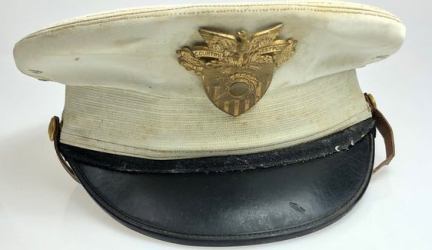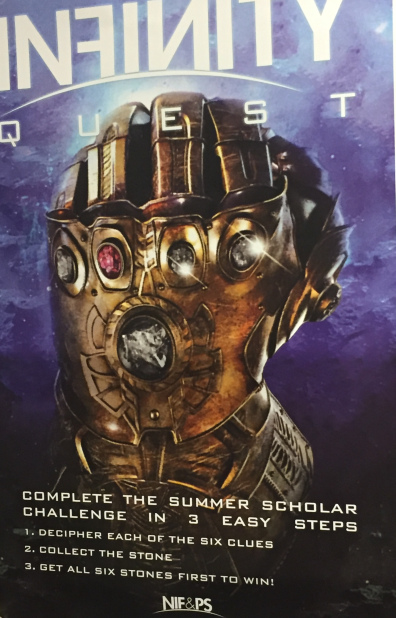The National Ignition Facility
Hello World! Hope life has been treating you well.
One major issue in working for the government is that whenever you get something nice from the company, you are acutely aware that this was paid for by taxes. There was another student breakfast Tuesday for all the interns working with computers, and some cake on Wednesday. It’s been four weeks and they have given us three t-shirts, five free meals, one free ice cream, one free cake, and a pop cover band. Normally I would be delighted, but now all I can think of is how the funding power of the DoD combined with the DoE is truly a formidable force!

I learned a lot this week from the seminars. One was about supercomputers! LLNL contains several of the world’s greatest supercomputers including Sierra, which is the #1 most powerful supercomputer in the world! It can perform 125 quadrillion floating-point operations per second. Apparently one of the biggest issues with supercomputers is scaling. The scale of an enormous computer is just so completely different from the scale of a small one that what works for one doesn’t necessarily work for the other. If there are only a few processors in the machine, it makes sense for each one to be able to communicate with every other processor in the machine. But when you increase the amount of processors, that system would make the machine prohibitively slow. As a result, the systems in a supercomputer are quite different from the systems in a regular computer. Another issue is advancement. As our knowledge of the universe increases, the demands made on supercomputers increase as well. For example, our supercomputers in the lab are currently analyzing the structure of the human heart in more detail than ever before with the intention to make a prosthetic, studying the effects of climate change with an incredibly detailed model of the Earth, as well as a vast number of other projects. Moore’s law, which states that he number of transistors in a dense integrated circuit doubles about every two years, is still going strong, but many other areas of advancement are not improving as well. Clock speed hasn’t been improving significantly because we still haven’t solved the issue of heat. If the computer gets too fast, you’ll melt the chip. The hope is that quantum computing will be the next step for high performance computing, and this stagnation of computer power will end.
I also went on a tour of the optics loop, which cleans the laser lenses! Basically, the NIF laser beam is passed through many lenses on its way to the target. Sometimes those lenses are to focus the beam, making it stronger. Sometimes they are used to bend some light away from a target, towards a a device for analyzing the beam. In addition to lenses there are transparent shields the laser passes through that are designed to keep debris away from the target. The lenses and shields are highly transparent so the laser doesn’t harm the materials, but sometimes, despite the lab’s efforts to keep the lens clean, the glass will get dust or debris on it. When that happens, the debris absorbs light from the laser which is passed to the lens, which causes damage. This is a huge problem because the lenses are expensive and NIF is shot roughly twice a day! You could just avoid shooting at the holes, but a bit of the light will inevitably pass through the hole which will increase the size of the hole and eventually all of the glass will be damaged. Instead of just throwing the lenses out every time they get damaged, the optics loop (I don’t know why it’s called a loop) changes the shape of the holes so that they stay the same size, and so long as the laser isn’t fired directly through the holes, nothing problematic happens. They use a CO2 laser which shoots weak red light to alter the shape of the holes. The final holes are shaped like cones, and rather than being ~500 µm wide they are about 2mm wide. Originally, the laser was controlled by a human. But after several years, they had collected enough data on what the human generally did, that they could train an AI to do it instead. Humans are still important to the process, which is a huge problem because humans are very dirty! To keep the area clean, all workers must wear shoe covers, mouth covers, hairnets, gloves, and special suits. To even enter the area where the clean suits are kept, you have to wear everything else! While on the tour, we went near the suits and had to wear all the extra gear. There was also a sticky mat on the ground which we stepped on to get gunk off our shoes.

Another seminar I went to was on Skyfall. Skyfall is a cybersecurity laboratory named after the James Bond movie, which studies the US power grid. As I talked about in a previous post, the US power grid would be an excellent target if you were trying to attack the country because nothing would be worse for the US than taking away all our electricity! There are a multitude of ways to harm the US power grids, most of them center around causing a huge surge of electricity, more than our grid can handle. Skyfall is a combination of computer simulations imitating the US power grid, as well as some hardware such as smart meters which are used by the public. They have a few different versions of each type of hardware made by different brands. Apparently many brands will actually ask LLNL to test their products to make sure they are safe and secure! They also have to run different simulations for different parts of the power grid. The Western grid is more spread apart than the Eastern grid, and the Texas grid is one of the smallest in the world. These differences mean that different things could be dangerous to each of them. One danger would be altering the clocks that run the grid, because if the clocks conflict the power will be stored incorrectly. One interesting fact I learned was that our presenter got his PhD by figuring out what you can learn about the grid by putting a sensor to in a socket: apparently a lot! It was a Military Academy and ROTC seminar, so most of the audience had uniforms on. Two of the members had non-camouflage uniforms with strange purple belts, and apparently that’s because they go to West Point and are required to wear the uniforms from the 1800s! Another person had a very unusual camouflage one with elastic in the middle, and apparently he was wearing the uniform people when they also have body armor on. Some of the ROTC members told me he was probably wearing it to show off.

They’re trying to get the interns to explore the entire NIF facility, not just the offices, so they designed an Avengers themed Infinity Quest to get us to check the place out. You have to get a sticker that looks like an Infinity Stone from six different places around the lab, and put them on a poster of the Infinity Gauntlet, which is cheesy but very fun! The winner gets a platstic 3D printed Infinity Gauntlet. So far, I have the Reality Stone which I got from going to the lobby of NIF and using AR goggles to learn what the laser does.
I went to the weekly NIF controls programmer meeting with my my mentor Lyle, Mikhail who runs the thing, and three other programmers who I hadn’t met before. At one point during the meeting, Lyle asked me how many of the acronyms I had understood. I told him that I understood that one of the acronyms started with IC and then a number, which meant it represented an issue that had to be solved. They were very nice and explained to me what all the acronyms meant, and it turns out what they were working on is pretty cool! They’ve gone past the days of x-ray cameras and even gamma-ray cameras, and are now working with neutron cameras! These are much more precise than what they had before, because hitting something with rays will alter it slightly. Neutrons are neutral so they mess it up less.

I learned a few interesting things about the ADA coding language from one of the programmers in the lab. Basically if the military were a programming language, it would be ADA. It is one of the most strongly typed languages in existence. If you want to generate a random number between one and ten with a certain degree of precision, and then another number between one and ten with a different degree of precision, you cannot add those two numbers together without casting one of them first, because they are considered different types. It catches most errors before runtime, which is helpful because compiler errors are much easier to fix than runtime errors. It is extremely fast to run. However, because things are so strongly typed, it can be difficult to write creative or unusual code.
One of my labmates has a friend interning at Microsoft. He took a picture of himself dabbing on top of the Microsoft sign in front of the office he was going to be working at. I can’t take pictures on the lab grounds, so I couldn’t do one of me on top of the NIF logo, but there’s an LLNL sign that isn’t officially on the lab grounds. I wasn’t allowed on top of the sign (there were armed guards nearby enforcing this rule) but I was allowed to stand next to it. So of course, I had no choice but to do this:

May you be ever victorious in your future endeavors!
M.E.W